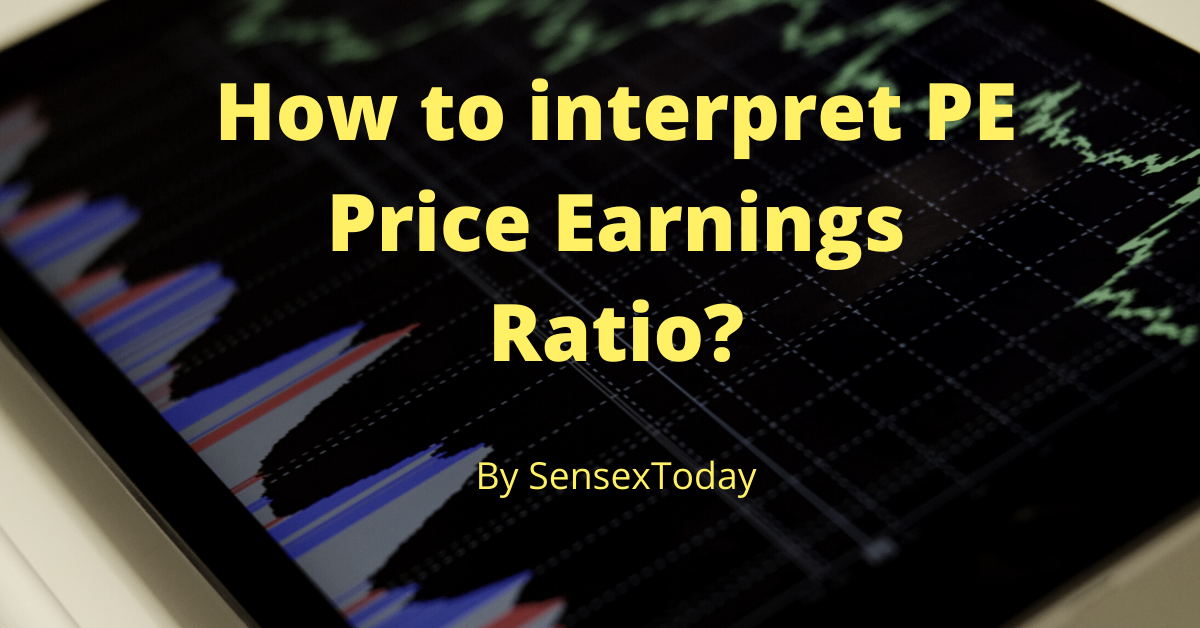The PE ratio of any company which is also known as the price to earning ratio is nothing but how many times the investor is paying the earning of that share as compared to the current market price. In simple words, the number of times an investor is paying as compared to the earning is basically the price to earnings ratio.PE ratio is also known as price multiple or earnings multiple.
How to Calculate PE (Price to Earning)
To calculate the PE of any company we need two data of that company. The first one and easy to find is the current market price of a share of that company and the second is earning per share that means how much profit the company is generating per share. The formula for the PE ratio is,
Here we can find the current share price very easily but the total earnings per share is something which we will have to calculate first, so the EPS (Earning Per Share) is calculated as Profit After Tax (PAT) divided by the Total number of shares,
Now, Let’s understand the PE ratio with one simple example, assume that there is a company called XYZ Limited which is listed on the stock market with a current share price of 100Rs and generates 10,000Rs of net profit per year with a total number of 2000 shares.
So according to the formula we need to data out of which we already have share price, now we need to calculate EPS, so the Profit after tax (PAT) of XYZ Limited is 10,000 divided by 2000 total number of shares. The answer will be 5, now the calculation o PE is a very easy current share price that is 100 divided by EPS which is 5, So the PE ratio of XYZ Limited is 20.
Don’t worry if you don’t have to calculate all these by yourself, you can find the PE ratio of any company for free on websites like Moneycontrol and Tickertape.

Interpretation of PE Ratio
The Interpretation of PE is a really helpful thing basically it helps to make a decision that whether I should buy this stock or not. If you are a new investor or recently started investing in the stock market, remember this thumb rule for the ratio that a low PE means the stock is cheap and a very high PE ratio means the stock is a bit expensive also there are going to be exceptions for this as well so just don’t blindly follow this rule or you just can’t realia on this rule alone, do some research on the company as well before investing.
The thing about the PE ratio is that there is no specific rule one can’t say that if the PE is below for example 20 just buy it or more than 30 don’t buy it. So there is nothing like a typical value above which investors would know that the company is Overvalued and below which the company is Undervalued.
Also Read : Coffee Can Investing: A way to become a millionaire.
Types of PE
There are basically two types of ratios. The first one is the forward PE ratio and the second one is Trailing PE ratio.
Tarling PE is nothing but PE is which is derived based on the past data or last 12-month data. So basically, the Trailing PE ratio is derived using the past 12-month data of the company so it depends upon past performance. Forward PE ratio is calculated by using the estimated figures.
For example, if the date is 15 June 2022, so for Trailing PE data used to be used will be 21-22 And for forwarding PE the estimated data of 22-23 will be used.
In a nutshell, ideally lower PE is good but does not mean just buying it without considering any other factors on the other side higher PE ideally expensive buy doesn’t mean just ignoring it or don’t buy it because if investors have high confidence in the stock than they are ready to pay more and that is why the PE ratio could be on an upper side.
Recommended: The Intelligent Investor

